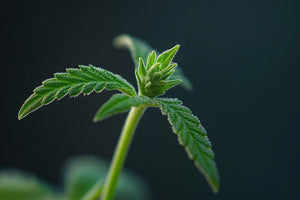Many friends often ask me, “Are LED growth lights useful for plants?” and “Can they really accelerate plant growth?”If we want to understand whether LED lights can work on plants, we need to understand its principles, including how growth lights promote plant growth and so on.
1. How LED grow lights work
Imagine being a plant with an LED grow light as your personal sun. These compact lights are composed of numerous tiny light-emitting diodes (LEDs), each acting like a miniature spotlight that bathes you in light. Unlike older, bulky grow lights, LEDs are reminiscent of technology straight out of a science fiction movie—they're highly energy efficient, emit minimal heat (so you don't need to worry about overheating), and have a long lifespan, much like buying a reliable car that lasts for years.
The operational principle of LED grow lights is akin to crafting a gourmet menu tailored for plants. Did you know plants are discerning eaters, preferring specific light colors—primarily red and blue? Red light acts like an energy booster, encouraging flowering and fruiting, while blue light resembles nutritious health food, fostering robust leaf growth. LED lights serve as adept chefs capable of adjusting their spectrum to create a perfect "menu" of light colors tailored precisely to the plants' needs.
2. How LEDs simulate the spectrum of natural light to promote plant growth
If natural sunlight is like a grand outdoor barbecue party, then LED grow lights are like a versatile microwave oven at home. They mimic the "flavor" of natural light, making plants feel as if they are basking in outdoor sunshine. LED lights achieve this by blending different light colors, similar to crafting a complex cocktail, ensuring plants receive all the essential elements they need.
Do you know why plants favor blue and red light? It's similar to how people enjoy coffee in the morning and hot milk in the evening. Blue light is like a plant's morning coffee, invigorating them and encouraging robust leaf growth. Red light, on the other hand, is like evening hot milk, helping plants relax and promoting the blooming of flowers and ripening of fruits. By fine-tuning this "recipe" of lights, LED grow lights provide plants with the optimal light spectrum from morning to night, fostering their growth and health.
More importantly, LED lights can also simulate the effects of sunrise and sunset, allowing plants to experience a "natural" day and night cycle. It's like making a virtual reality game for plants to make them think they're growing outdoors, even though they're actually in your living room or basement.

3. The specific impact of LED growth lights on the plant growth cycle
Under LED lighting, the photosynthetic efficiency of plants is significantly enhanced because LED lights provide a light source that closely matches the optimal wavelength for plant photosynthesis. For instance, with LED illumination, plant seeds germinate faster, grow more rapidly, and produce more biomass. These improvements not only boost crop yields but also reduce the time required from sowing to harvest.
Moreover, LED lights can influence the flowering time of plants by adjusting the photoperiod and light intensity. This is particularly crucial for photoperiod-sensitive plants, whose flowering time depends on the length of day. By utilizing LED lights, agricultural producers can precisely control the plants' growing environment, enabling year-round production without seasonal limitations and significantly increasing agricultural efficiency.

After some exploration, we found that LED growth lights are not only an accelerator of plant growth, but also make modern agriculture more efficient and convenient. LED grow lights are gradually changing the way we grow crops and making food production more reliable. If you want to know more about LED lights, you can click on the dialog box below to contact us~
Note: The above content is reproduced from VANQ

